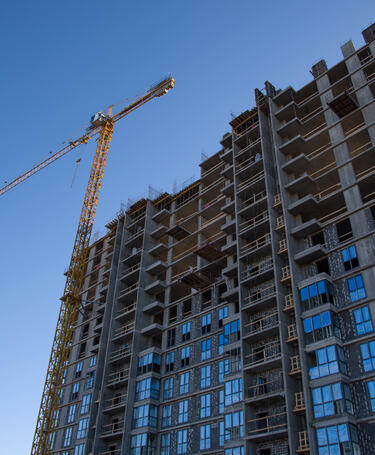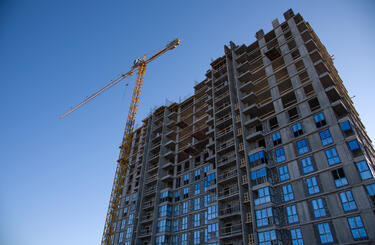
A joined-up approach to building safety

The UK is introducing the most significant reform to building safety regulations in decades, aiming to create a coherent system that defines responsibilities and improves quality across the built environment.
Published in July 2021, the UK government’s long-awaited draft Building Safety Bill promises to deliver the biggest reform of regulation across the construction and residential property sectors in decades.
The trigger for the proposed legislation was the tragic fire at London’s Grenfell Tower in June 2017, which cost 72 lives, and which threw the spotlight on significant failings within the regulatory system for the construction, operation and maintenance of buildings.
The bill heralds the introduction of a more robust safety regime that will take a proportionate, risk-based approach to building work, including remediation. It introduces a raft of new requirements for the competence of those who design and build – as well as operate – higher-risk residential buildings.
The Building Safety Bill has been drafted to reshape how the industry designs, builds and renovates all buildings in future.
The Building Safety Bill has been drafted to reshape how the industry designs, builds and renovates all buildings in future. It introduces changes to the Building Act, Architects Act and Building Regulations, and will reform the building control system.
It will also attempt to dramatically increase digitalisation through the whole life-cycle of buildings, to monitor performance, and includes stronger regulatory powers for construction products, introducing a new market surveillance and enforcement regime led by the Office for Product Safety and Standards.
Regulatory ovehaul
According to the government, these reforms are aimed at giving “residents and homeowners more rights, powers and protections – making homes across the country safer”. It will, it says, “overhaul regulations, creating lasting generational change, setting out a clear pathway on how residential buildings should be constructed, maintained and made safe”.
The bill also sets out the framework to improve compliance, with tougher penalties for those who break the rules, and mandates developers to belong to a New Homes Ombudsman scheme.
Kevin Kelly, President of international professional engineering association the Chartered Institution of Building Services Engineers (CIBSE), described the legislation as “the most fundamental reform of building-related legislation in decades”.
CIBSE, he added, is committed to working “with government, with the national standards body BSI, and with all interested parties to deliver a system of building legislation that delivers safe and sustainable buildings”.
Golden thread
Part of the legislation aimed at raising standards – defining responsibilities for building safety and maintenance, and ensuring a joined-up approach to this across all involved – is to make the collection of ‘golden thread’ building performance information mandatory. Legislation for this could come into effect by spring 2023.
The bill’s supporting material includes an outline of the requirement for duty holders to create, hold and maintain the golden thread as part of the secondary legislation that will accompany the bill. In July, the Building Regulations Advisory Committee (BRAC) golden thread working group explained how digital tools would be used to enable building safety information to be stored throughout the life of a building. It offered a detailed definition of the golden thread, which it summarised as the "information that allows you to understand a building and the steps needed to keep both the building and people safe, now and in the future”.
The full definition outlines a seven-point plan to improve standards:
1. The golden thread will hold the information that those responsible for the building require to:
-
show that the building was compliant with applicable building regulations during its construction, and provide evidence of meeting the requirements of the new building control route throughout the design and construction and refurbishment of a building.
-
identify, understand, manage and mitigate building safety risks in order to prevent or reduce the severity of the consequences of fire spread or structural collapse throughout the life-cycle of a building.
2. The information stored in the golden thread will be reviewed and managed so that the information retained, at all times, achieves these purposes.
3. The golden thread covers both the information and documents and the information management processes (or steps) used to support building safety.
4. The golden thread information should be stored as structured digital information. It will be stored, managed, maintained and retained in line with the golden thread principles (see below). The government will specify digital standards, which will provide guidance on how the principles can be met.
5. The golden thread information-management approach will apply through design, construction, occupation, refurbishment and ongoing management of buildings. It supports the wider changes in the regime to promote a culture of building safety.
6. Building safety should be taken to include the fire and structural safety of a building and the safety of all the people in, or in the vicinity of, a building (including emergency responders).
7. Many people will need to access the golden thread to update and share golden thread information throughout a building’s life-cycle, including, but not limited to, building managers, architects, contractors and many others. Information from the golden thread will also need to be shared by the Accountable Person with other relevant people, including residents and emergency responders.
BRAC also outlines the principles underpinning the golden thread, which include being accurate and trusted, accountable, understandable/consistent, proportionate, durable and accessible.
The aim is to set out clear duties and maintain accountability at every level – from the client to those designing, building or maintaining a building.